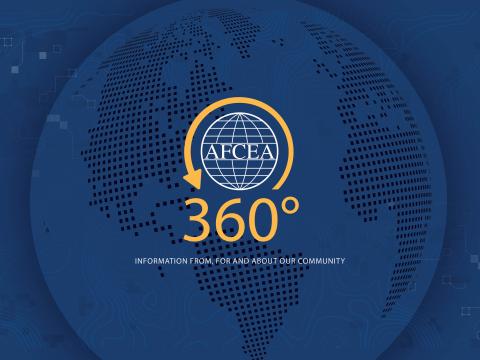Empowering Productive Collaboration Despite Distance: Sponsored Content
Companies that opened their doors a mere five years ago couldn’t have imagined the sudden, immense need for secure communications capabilities a pandemic would demand any more than financiers could have foreseen FaceTime and Zoom as a future investment windfall. But in March 2020, COVID-19 arrived, bringing surprising needs to the forefront. In a matter of days, government agencies had to continue operations while the fast-spreading virus required staff to shelter in place and videoconferencing replaced boardrooms and classrooms.
And although now in its 50th year of business, it’s more than luck that put Crestron Electronics Inc., Rockleigh, New Jersey, in the right place at the right time to meet these unexpected requirements brought on by the global emergency. With a full line of products that facilitate collaborative communications, the company had been constantly developing its solutions based not only on the latest technologies but also by recognizing emerging corporate and government needs.
Crestron developed one of the first networked devices in the audio-video (AV) industry. This innovation was followed by the release of E-Control, which permitted the integration and control of devices within environments.
The company continued to build on advances in the communications arena and, in 2001, introduced the first server-based management system. Developed for Microsoft, the system connected devices to Exchange, making them “scheduling aware,” a capability that has proved priceless 20 years later when remote working became the norm.
Crestron broadened its focus from the AV realm to the IT professional ecosystem in 2014. So, by March 2020 when COVID-19 hit, it had created a wide-ranging portfolio of solutions to assist organizations conduct business-as-usual securely and simply—regardless of employees’ dispersed locations.
The pandemic also accelerated a nascent trend: Today’s numbers demonstrate that the growing need for smart, networked solutions will continue. In U.S. government agencies, for example, 56 percent of government employees eligible to telework took advantage of the option in 2019, but that number jumped to 90 percent in 2020. Now, after working effectively—and in many cases more efficiently—from home for over two years, the workforce expects more workplace flexibility, so recruiting highly qualified employees means offering it.
Fortunately, now more government organizations have the technical capabilities to offer the remote work option than they did in the past. According to the Status of Teleworking in the Federal Government Report to Congress for fiscal year 2020, 84 percent of government agencies have the tools/resources to respond to future emergencies that require maximum telework as part of continuity of operations plans. This is a 5 percent jump in just one year.
But moving from unified communications to unified collaboration requires more than a phone, a computer and a connection. In agency and military workspaces, it demands security, reliability and coordination.
That’s one reason ensuring security is a core component of Crestron’s mission. Central to its success is the company’s unwavering commitment to device data protection.
“Simply put, if it’s on the network, it must be secure,” Capt. Jeremy Button, USA (Ret.), director of federal sales, Crestron, explains. “Clients need to know who and what is on their network.”
To achieve this goal, the firm leverages technologies such as AES Encryption that ensures secure transmissions, 802.1x Authentication so the organization’s IT department explicitly authorizes every device on the network, and Microsoft’s Active Directory, a centralized credential management capability. In addition, the U.S. Defense Department Defense Information Systems Agency’s Joint Interoperability Test Command (JITC) has approved Crestron products, which incorporate PKI authentication, Transport Layer Security, Secure Shell Protocol, HTTPS and secure Common Industrial Protocol.
Hemant Dhanrajani, vice president of engineering, Crestron, leads a team to ensure devices are protected from digital threats. Because increased connectivity means more opportunities for e-break-ins, the in-house team as well as a third-party independent hacking penetration company test devices. “We tell them to hack our world, and I’m very proud report that we continue to pass these very stringent tests by those third-party firms,” Dhanrajani says.
In addition to ensuring security, enabling employees to work remotely requires reliable equipment. After all, when organizations like the Social Security Administration transition 95 percent of the workforce to alternate duty stations within three weeks of a declared pandemic, it must be able to count on the capabilities that connect staff members.
To this end, Dhanrajani oversees more than 120 employees who search for weaknesses at the software and firmware levels. “Every time I plug the cable into my laptop to make a presentation, does the software recognize what’s happening? Why is that important?” he relates. “Because when we are selling these products to a Microsoft or a Johnson and Johnson, they don’t have one product in their facility.
They have hundreds of products, sometimes thousands of the products across multiple facilities. Every single room in that enterprise has to work every single time they plug something in.”
Because the products are shipped and used worldwide, their viability also is tested in extreme temperatures. Packaged products are heated to temperatures of 104 degrees Fahrenheit for 72 hours followed by another three days of 140 degrees Fahrenheit then dropped down to minus 22 degrees Fahrenheit.
Ensuring this durability is important to Crestron because it also works with other companies that demand a high level of reliability from its partners’ solutions. For example, the firm joined forces with Norway-based Huddly and GN Group’s Jabra to make sure all participants in a virtual collaborative environment have “equal pixel real estate.” Together, the organizations developed advanced collaborative capabilities that exceed bare-bones videoconferencing.
And, while meeting participants using tools such as Microsoft Teams or Zoom are accustomed to the “Hollywood Squares” gameshow look, collaborative sessions comprising multiple conference rooms in different locations pose challenges. “Participants move around the physical room and may have one-on-one conversations. Consequently, keeping everyone in the meeting environment equally engaged—especially remote attendees—to collaborate is critical to productivity,” explains Lauren Simmen, senior product marketing manager, Crestron.
The team’s intelligent video offerings help collaborators remain engaged no matter their locations. Huddly and Jabra artificial intelligence solutions provide a variety of tracking and framing capabilities. A wide-angle camera captures the entire room, widening or narrowing the frame as participants leave, join or move around. In addition to a whiteboard streaming feature, other software options keep track of attendees, recognize both in-person and remote workers, and provide information about room usage and occupancy.
Broad-ranging capabilities such as these also can help entire divisions, companies and agencies remain efficiently connected for time-saving information sharing and effective collaboration opportunities.
For instance, Corning’s Optical Communications division turned to Crestron to assist with the design of its new 180,000-square-foot headquarters in Charlotte, North Carolina, to achieve these goals. Inside the facility, Corning wanted to standardize communications on a wireless-first approach. Now, the company has access points for every 1,100 square feet of real estate to create a clean layout throughout the building.
Additionally, the company sought an AV infrastructure that not only enhances employees’ overall work experience but also complements the modern architecture of the building. Creston fulfilled these requirements with its JITC-certified DM NVX AV-over-IP technology that can be fiber-fed in a fiber-deep architecture and dropped directly into the Corning network. More than 170 units were installed throughout the environment and now drive content distribution to digital signage and conference room displays. In addition, the solution’s video matrix enables Corning’s executives to walk into any room and broadcast content to the entire building.
More than 60 Crestron TSW touchscreens located inside meeting rooms across the facilities feature a consistent, intuitive user interface to enable AV and meeting schedule control by allowing employees to locate and directly book available meeting rooms.
According to the U.S. Office of Personnel Management’s 2021 “Guide to Telework and Remote Work in the Federal Government,” the landscape of telecommuting in the federal government continues to evolve. And, as the chief human resources agency and personnel manager for the federal government, it’s committed to supporting robust federal work programs that yield benefits for employees, agencies and the community.
Collaboration tools such as Crestron’s will enable federal, state and local governments to expand their continuity of operations plans. For additional information about how to address the challenges of the current and future environments download Crestron’s e-book “Keys to the Digital Workplace.”
The military has been using videoconferencing to meet with commanders in many geographic locations for more than a decade. COVID-19 caused the collaboration capability to expand into other government agencies as well as the corporate and academic sectors.
For more information:
855-263-8754 • crestron.com/Signal




Comments